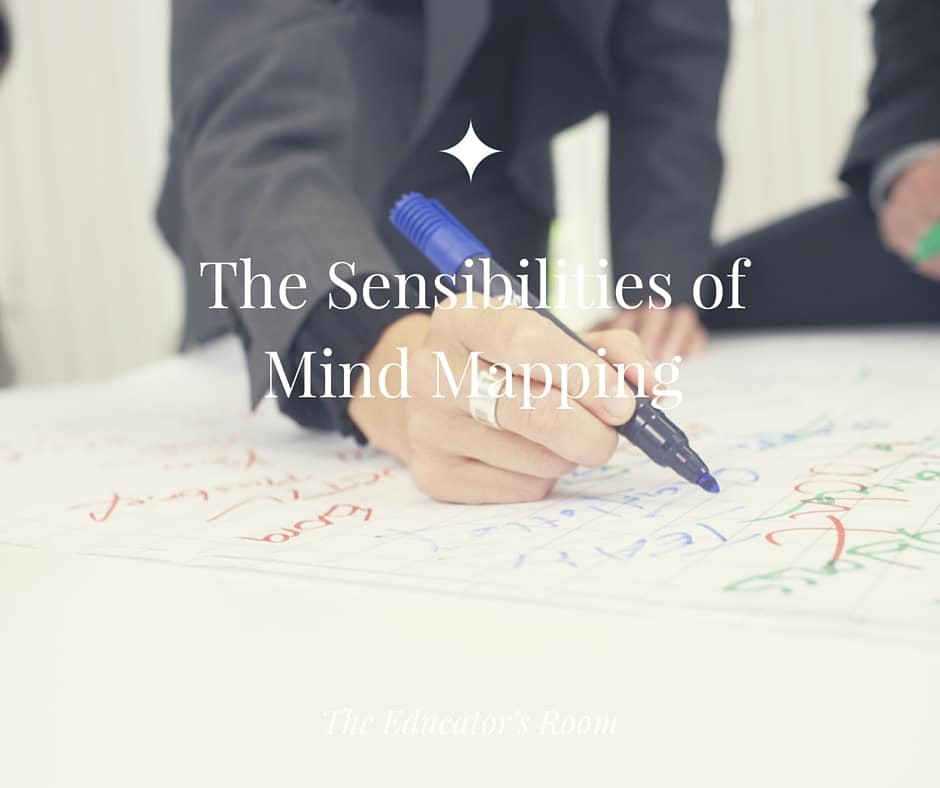I was in attendance at a social studies department meeting reviewing how current curricula addresses Proficiency Based Graduation Requirements (PBGR). A disagreement occurred over the requirement of mental mapping as a performance indicator. Teachers accustomed to multiple choice and essay writing for common assessment could not discern what constituted a mental map. The recall of Venn diagrams, illustrated maps with inset boxes and character trees of historic figures sparked initial enthusiasm but the conclusive agreement opposing mental mapping took me by surprise. We deduced that additional standard practices would not fit into an already exhaustive curriculum; mental mapping as an accessible indicator did not carry value relative to multiple choice testing. I wondered how such an integral practice could be set aside and how to assuage fears concerning this practice.
I can not for the life of me believe that teachers would not utilize mental as a common practice. In follow-up conversations with colleagues, I discovered that a lack of familiarity with this term was the first issue. Graphic organizers is a more relatable term. Facilitating mind mapping routines in paper form is customary practice for building connections between ideas and concepts. Fishbones, double entry diaries, character maps are just a few of ways in which students build a relationship of detailed understanding even when reviewed at a later time. There is no argument against the idea that students naturally engage when they listen and draw, sketch or organize their information as they collect it. However the value in that creativity can diminish if note taking is a single experience. It is possible to visualize information while unintentionally forming misconceptions which are difficult to erase. This brings forward another question concerning creative note taking skills; are digital mind mapping apps distractions or are they transformative tools?
Students who have the ability to add images, video or links to a concept can finally gain a greater awareness of things that are not part of their everyday life. Students who wonder what a coffee bean looks like, or a period costume will exclaim aloud how different it is from their original perceived notion. With that same mind mapping tool, students can stretch evidence into a point of view that they claim as their own. A student can write out a concept, include an actual image of that concept and then recreate the image as they wish it would exist. I do this with a lesson exploring inequity and law. Students can document individual Jim Crow or Apartheid laws. They can draw out comparisons and conclude with a dissenting opinion, a political cartoon or an entirely new law of their own creation. Students in a biology course can map out biomes of the world and then create a completely new biome including features of those they studied along with fantastical new species of animals to populate that biome. Students with time and the persistence to process information tend to excel in this learning environment.
A plethora of mind mapping applications have exploded social media yet I gravitate towards Picollage or Canva when image collections are necessary. My husband has urged me to try Paper by Fifty Three and Freemind. Some middle and elementary teachers recommend Popplet & Coggle. I utilize Notability for mashing text, image, audio and or video. I just picked up Mindnode as a Starbucks weekly give away app and I’m already enjoying its capabilities. Students will have their own app recommendations for sketching or drawing so to include them in the decision making process of choosing tools for how they want to showcase their learning is empowering. I often keep an apps list handy for student review should they change their mind because it is not necessary that I hold control of what they design or how they design it.
It seems odd that the validity of mind mapping as a performance indicator sparked debate but time management is at the heart of the issue. Over the past few years my colleagues worked collaboratively to deliver a social studies curriculum with a focus on uniformity and retake assessments for mastery. So focused was the data collection that creative learning had become a distraction from the pace. Creativity was utilized to slow down a class, to keep them on standard. Formative assessment was a source of anxiety when students already behind the curriculum pace tended to work slowly with artistic applications. Thus our system inadvertently prevented experimentation and exploration of content.
The transformation of current practice with statewide mandates towards proficiency-based learning is pushing educators to have constructive conversations about balancing learning and assessment instead of substituting one for another. Modeling what I teach, I personally benefit from enhanced doodles on my chores list and color-coding my grocery app. Mind mapping provides efficiency which in turn affords me more time for play. With that I can not argue.





